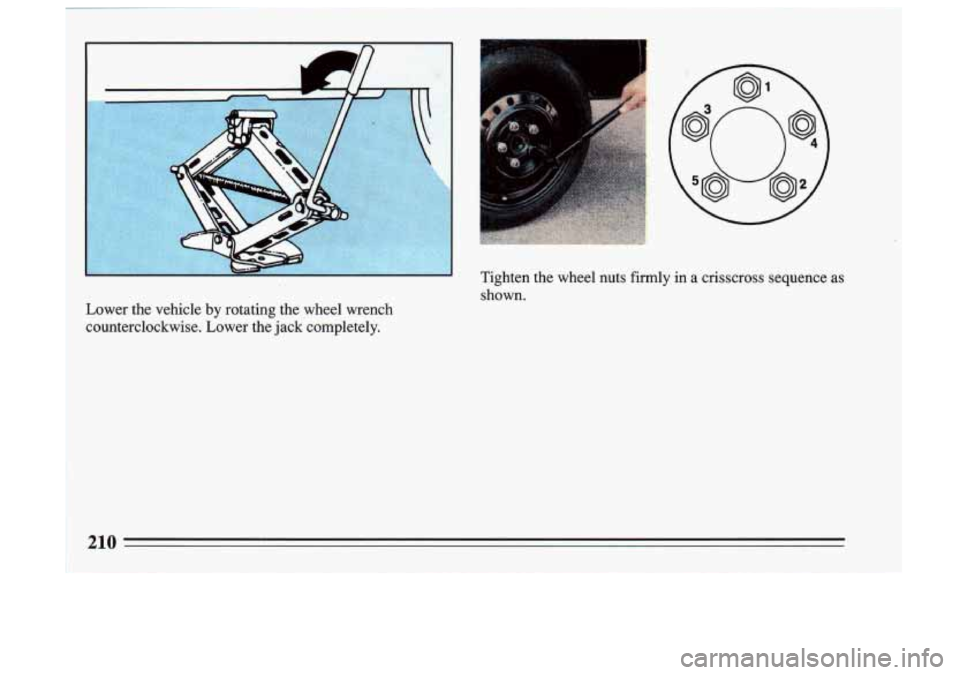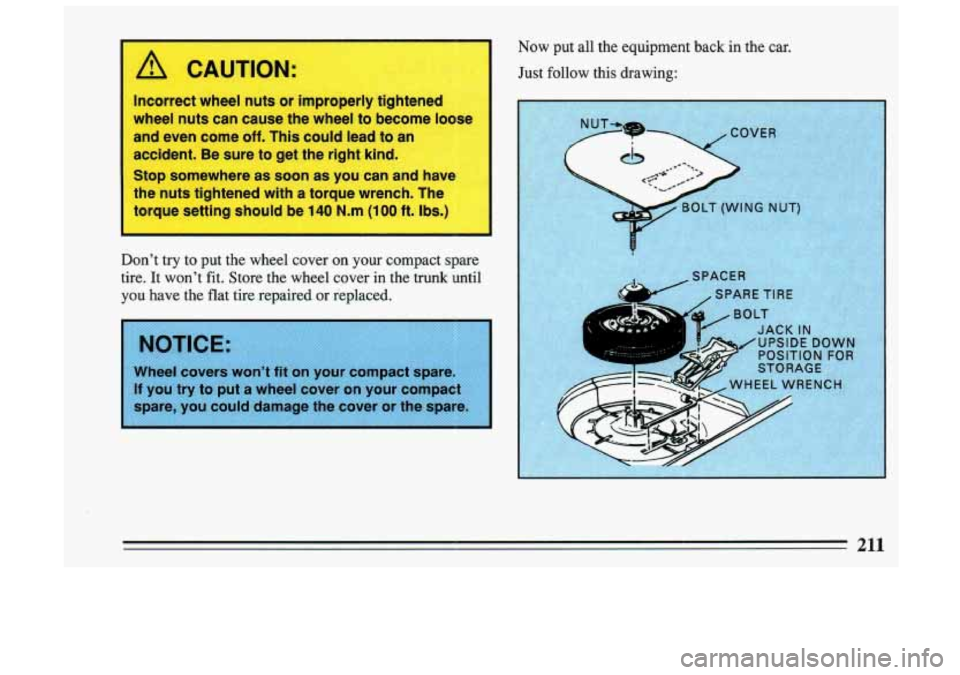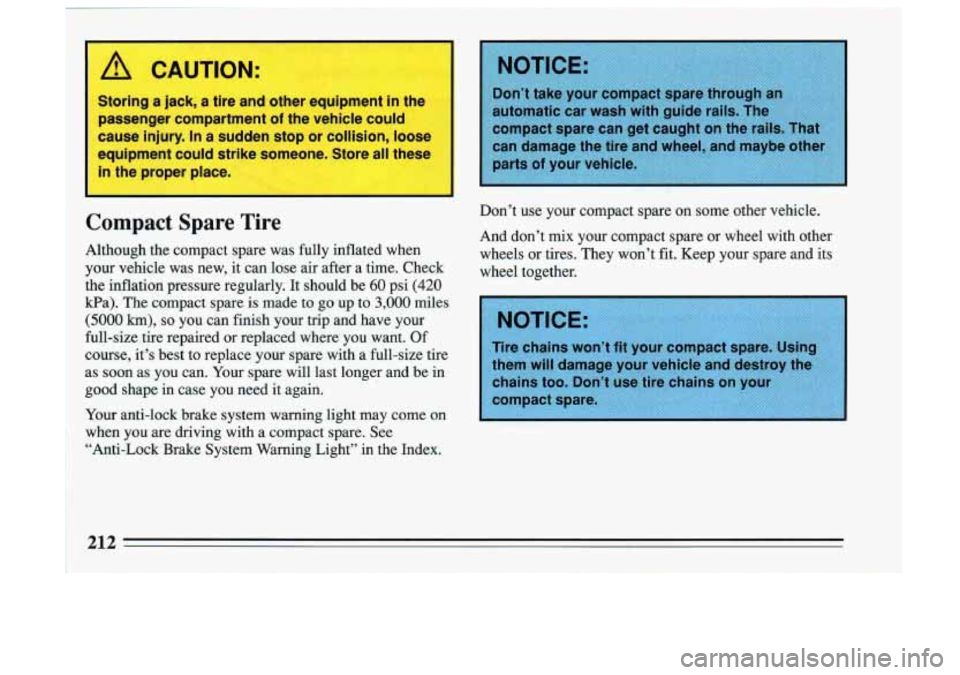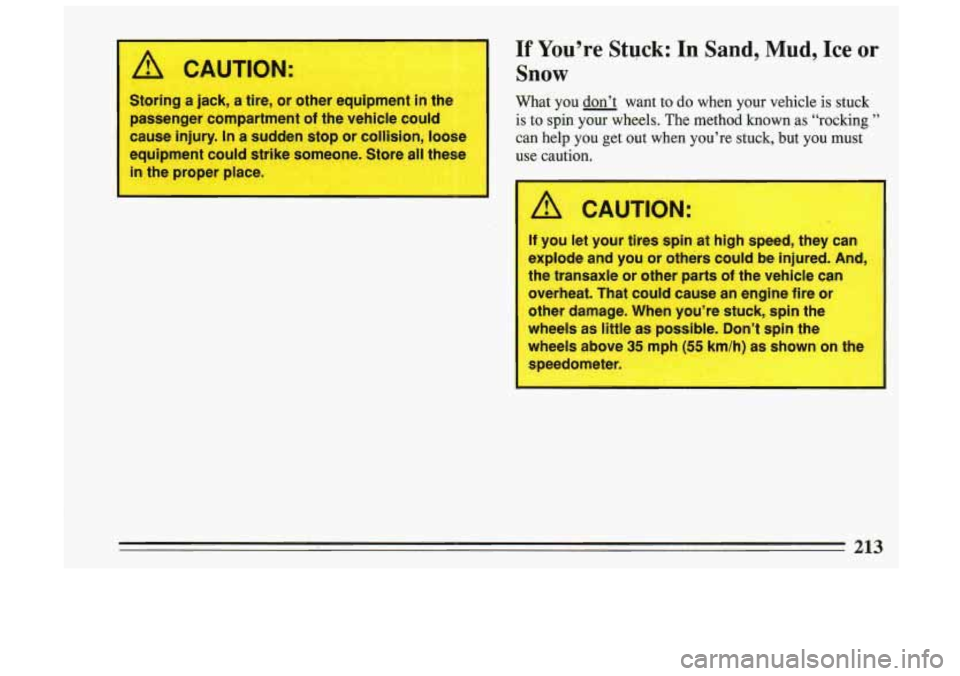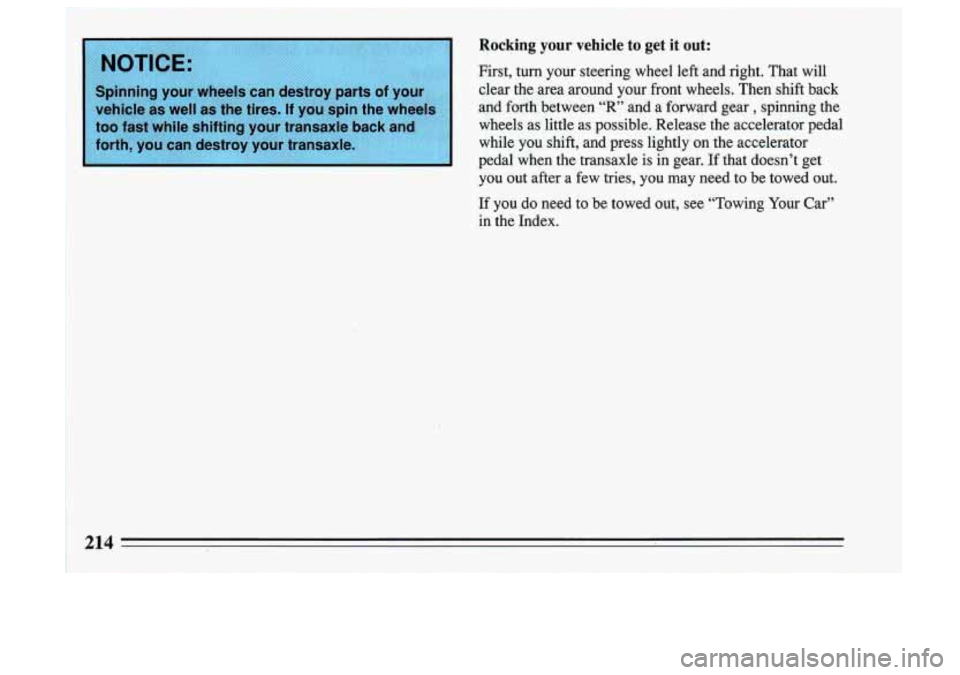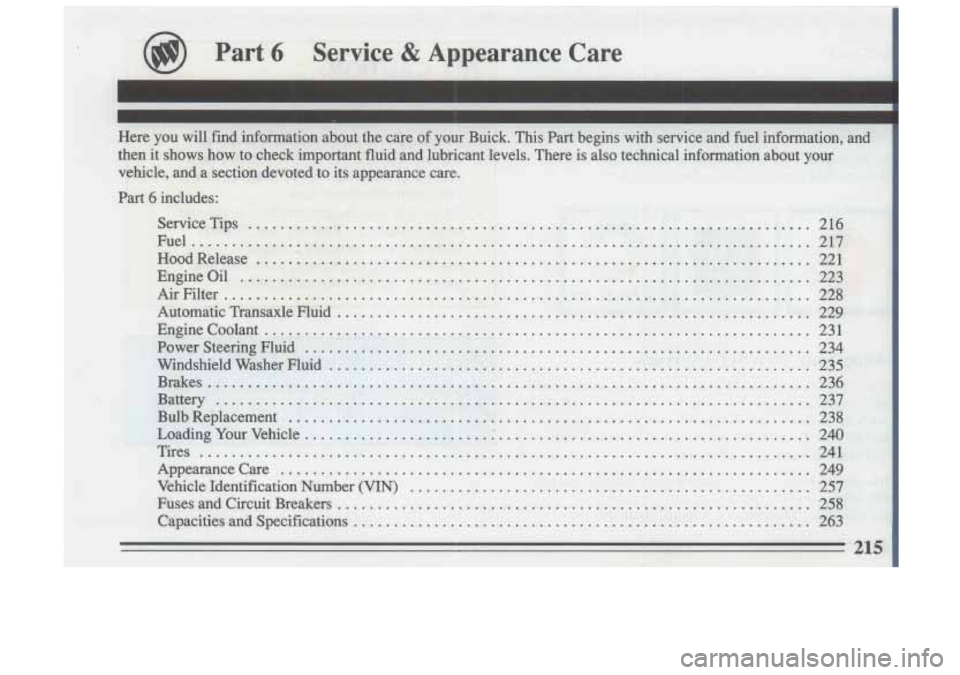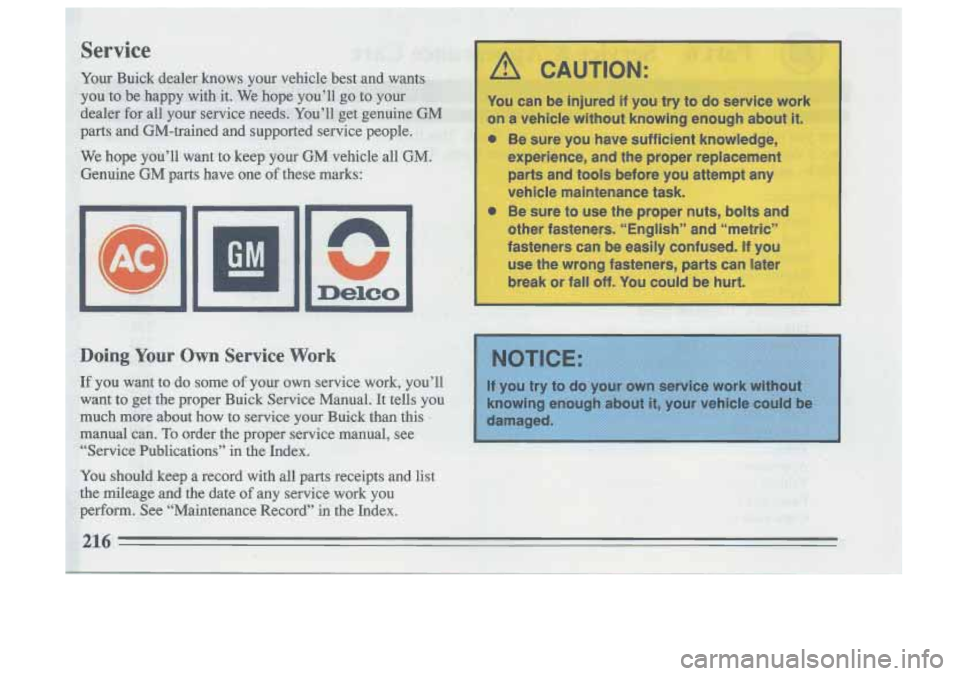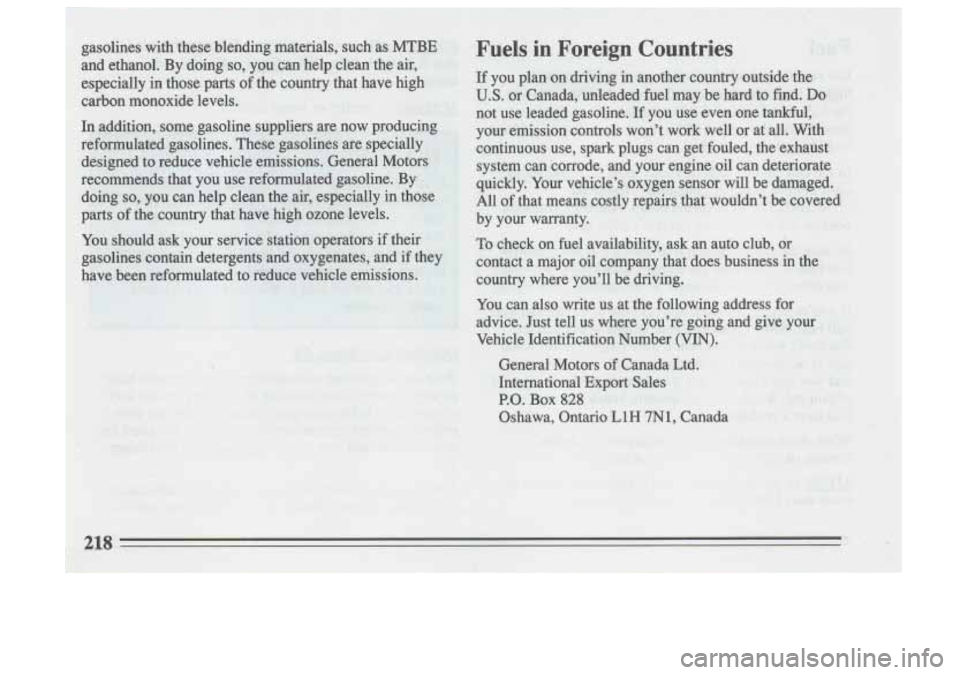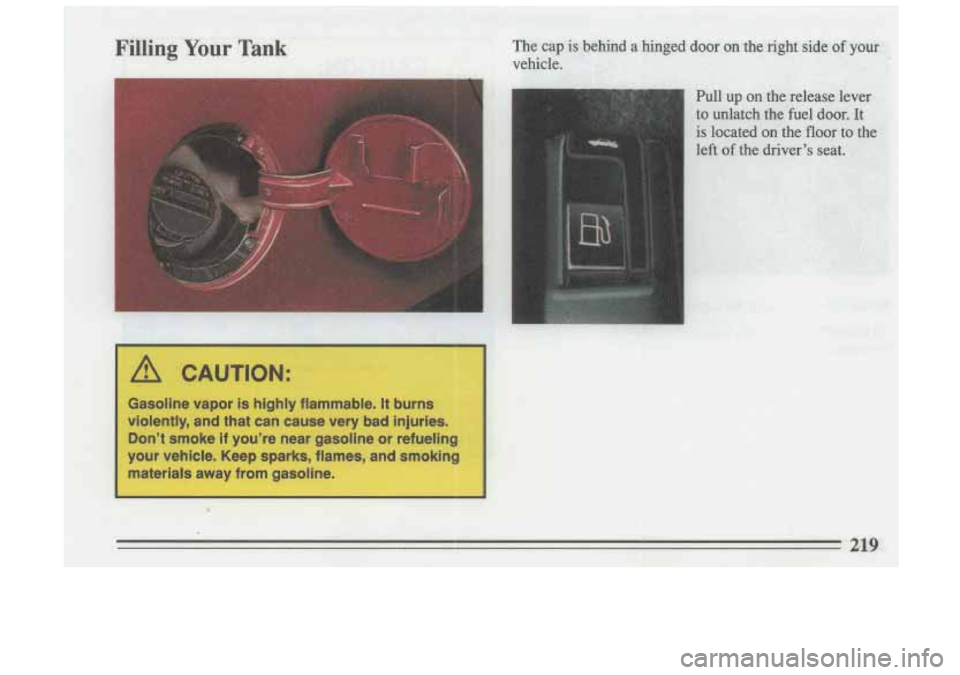BUICK SKYLARK 1993 Owners Manual
SKYLARK 1993
BUICK
BUICK
https://www.carmanualsonline.info/img/43/57703/w960_57703-0.png
BUICK SKYLARK 1993 Owners Manual
Trending: flat tire, oil change, belt, radiator cap, lock, lights, Ignition set up
Page 211 of 306
Tighten the wheel nuts firmly in a crisscross sequence as
shown.
Lower the vehicle by rotating the wheel wrench
counterclockwise. Lower the jack completely.
210
Page 212 of 306
n Now put all the equipment back in the car.
Just follow this drawing:
/! CAUTION:
Incorrect wheel nuts or improperly tightened
wheel nuts can cause the wheel to become loose
and even come
off. This could lead to an
accident. Be sure to get the right kind.
Stop somewhere as soon as you can and have
the nuts tightened with
a torque wrench. The
torque setting should be
140 N.m (1 00 ft. Ibs.)
Don’t try to put the wheel cover on your compact spare
tire.
It won’t fit. Store the wheel cover in the trunk until
you have the flat tire repaired or replaced.
I
Wheel covers won’t fit on your compact spare. ~~~~ ;q,yy+4
If you try to put a wheel cover on your cornp~~~~~~~
~~~~~,~~~
211
Page 213 of 306
when you are driving with a compact spare. See
“Anti-Lock Brake System Warning Light” in the Index.
Page 214 of 306
Storing a jack, a tire, or other equipment in the
passenger compartment
of the vehicle COL
cause injury. In a sudden stop or collision, lo ~ ~e
equipment could strike s-neone. Store all these
in the r-7per place.
If You’re Stuck: In Sand, Mud, Ice or
Snow
What you don’t want to do when your vehicle is stuck
is to spin your wheels. The method known as “rocking ”
can help you get out when you’re stuck, but you must
use caution.
If you let yow tires spin at Mgh speed, they can
expl’ode and
yo’u or ,others could be injured. And,
the tra.nsaxle
or other parts of ,the vehilcle cs--
overheat. That could cause an engine fire or
other damage. When you’re stuck, spin the
wheels as little as possible. Do:n’t spin the
wheel~s’ above 35 mph (55
speedometer.,
I
he
213
Page 215 of 306
Rocking your vehicle to get it out:
First, turn your steering wheel left and right. That will
clear the area around your front wheels. Then shift back
and forth between “R” and a forward gear
, spinning the
wheels as little as possible. Release the accelerator pedal
while you shift, and press lightly on the accelerator
pedal when the transaxle is in gear. If that doesn’t get
you out after a few tries, you may need
to be towed out.
If you do need to be towed out, see “Towing Your Car”
in the Index.
Page 216 of 306
Page 217 of 306
L
Doing Your Own Service Work
A CAUTION:
a
a
You can be injured if you try to do service work
on a vehicle without knowing enough about
it.
Be sure you have sufficient knowledge,
experience, and the proper replacement
parts and tools before you attempt any
vehicle maintenance task.
Be sure to use the proper nuts, bolts and
other fasteners. “English” and “metric”
fasteners
can be easily confused. If you
use the wrong fasteners, parts can later
break or
fall off. You could be hurt.
Page 218 of 306
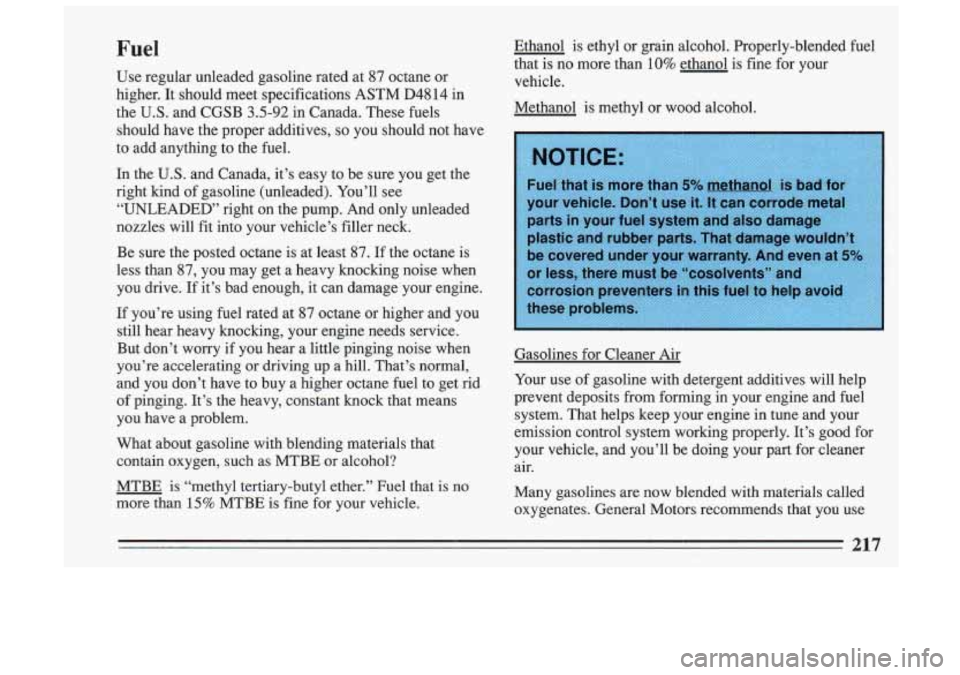
Fuel
Use regular unleaded gasoline rated at 87 octane or
higher. It should meet specifications ASTM D48
14 in
the U.S. and CGSB
3.5-92 in Canada. These fuels
should have the proper additives,
so you should not have
to add anything to the fuel.
In the U.S. and Canada, it’s easy to be sure you get the \
right kind of gasoline (unleaded). You’ll see
“UNLEADED” right on the pump. And only unleaded
nozzles will fit into your vehicle’s filler neck.
Be sure the posted octane is at least
87. If the octane is
less than
87, you may get a heavy knocking noise when
you drive.
If it’s bad enough, it can damage your engine.
If you’re using fuel rated at
87 octane or higher and you
still hear heavy knocking, your engine needs service. But don’t worry if you hear a little pinging noise when
you’re accelerating
or driving up a hill. That’s normal,
and you don’t have to buy a higher octane fuel to get rid\
of pinging. It’s the heavy, constant knock that means
you have a problem.
What about gasoline with blending materials that contain oxygen, such as MTBE or alcohol?
MTBE is “methyl tertiary-butyl ether.” Fuel that
is no
more than
15% MTBE is fine for your vehicle. Ethanol is ethyl or grain alcohol. Properly-blended fuel
that is no more than
10% ethanol is
fine for your
vehicle.
Methanol is methyl or wood alcohol.
Gasolines for Cleaner
Air
Your use of gasoline with detergent additives will help
prevent deposits from forming in your engine and fuel
system. That helps keep your engine in tune and your
emission control system working properly. It’s good for
your vehicle, and you’ll be doing your part for cleaner
air.
Many gasolines are now blended with materials called
oxygenates. General Motors recommends that you use
217
Page 219 of 306
Page 220 of 306
Gasoline vapor is highly flammable. It burns
violently, and that
can cause very bad injuries. I
Trending: four wheel drive, fuel fill door release, heater, display, maintenance schedule, clock setting, cruise control
